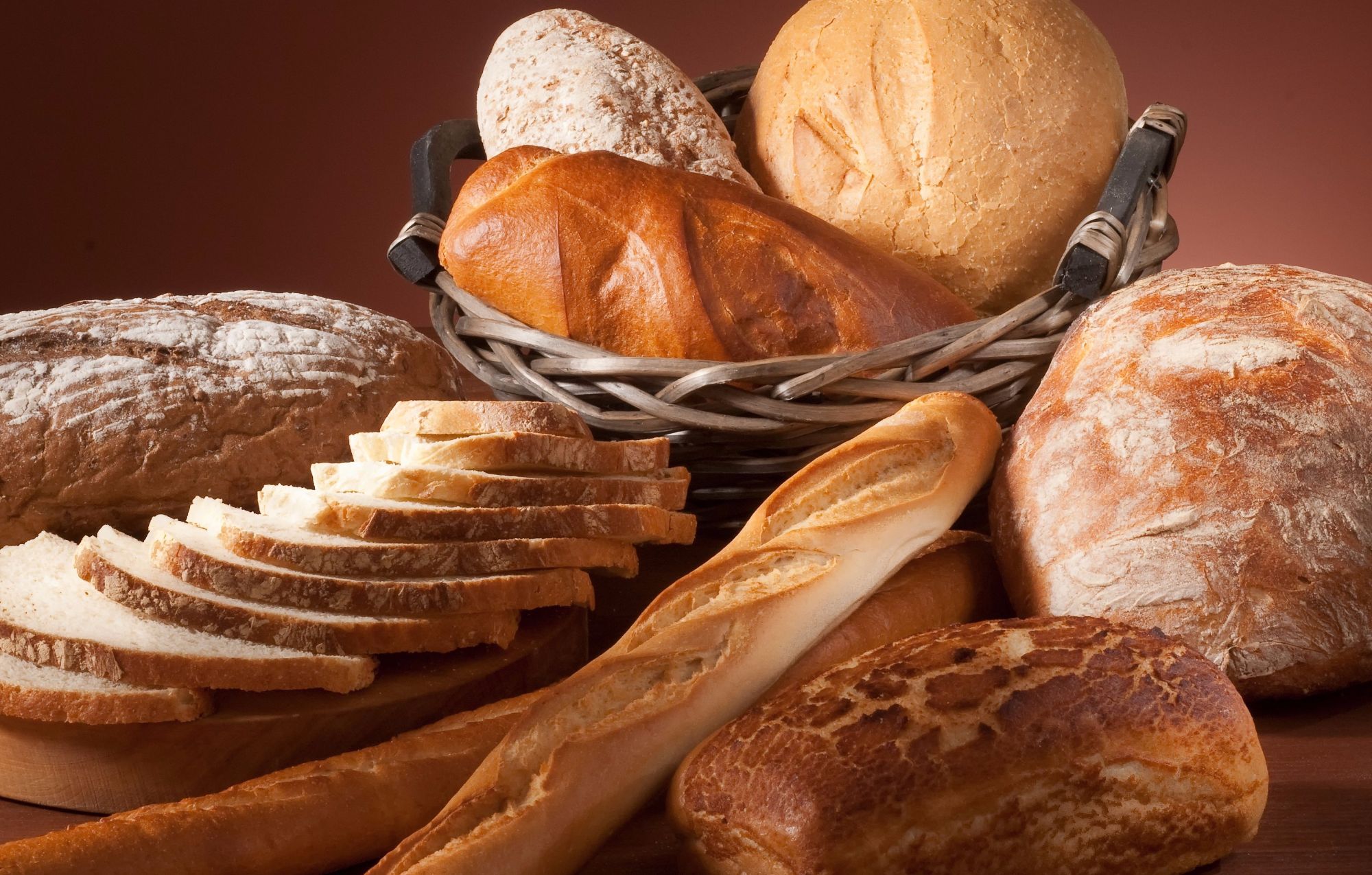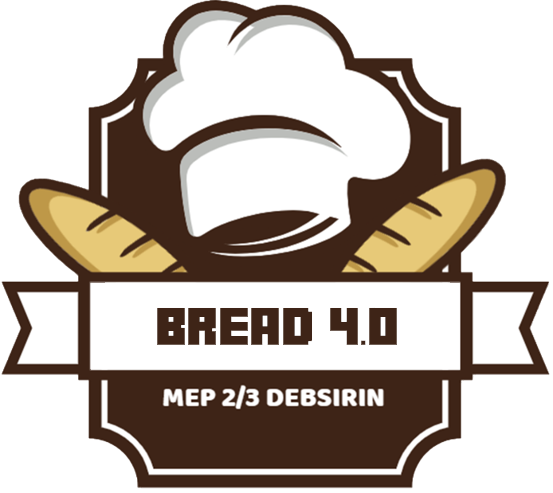Bread is a staple food prepared from a dough of flour and water, usually by baking. Throughout recorded history it has been a prominent food in large parts of the world and is one of the oldest man-made foods, having been of significant
importance since the dawn of agriculture.Bread may be leavened by processes such as reliance on naturally occurring sourdough microbes, chemicals, industrially produced yeast, or high-pressure aeration. Commercial bread commonly
contains additives to improve flavor, texture, color, shelf life, nutrition, and ease of manufacturing.Bread plays essential roles in religious rituals and secular culture.
The Old English word for bread was hlaf (hlaifs in Gothic: modern English loaf), which appears to be the oldest Teutonic name. Old High German hleib and modern German Laib derive from this Proto-Germanic word, which was borrowed
into Slavic (Polish chleb, Russian khleb) and Finnic (Finnish leipä, Estonian leib) languages as well. The Middle and Modern English word bread appears in Germanic languages, such as West Frisian brea, Dutch brood, German Brot,
Swedish bröd, and Norwegian and Danish brød; it may be related to brew or perhaps to break, originally meaning "broken piece", "morsel"
History
Bread is one of the oldest prepared foods. Evidence from 30,000 years ago in Europe revealed starch residue on rocks used for pounding plants. It is possible that during this time, starch extract from the roots of plants, such
as cattails and ferns, was spread on a flat rock, placed over a fire and cooked into a primitive form of flatbread. The world's oldest evidence of bread-making has been found in a 14,500-year-old Natufian site in Jordan's northeastern
desert. Around 10,000 BC, with the dawn of the Neolithic age and the spread of agriculture, grains became the mainstay of making bread. Yeast spores are ubiquitous, including on the surface of cereal grains, so any dough left
to rest leavens naturally.

There were multiple sources of leavening available for early bread. Airborne yeasts could be harnessed by leaving uncooked dough exposed to air for some time before cooking. Pliny the Elder reported that the Gauls and Iberians
used the foam skimmed from beer called barm to produce "a lighter kind of bread than other peoples" such as barm cake. Parts of the ancient world that drank wine instead of beer used a paste composed of grape juice and flour
that was allowed to begin fermenting, or wheat bran steeped in wine, as a source for yeast. The most common source of leavening was to retain a piece of dough from the previous day to use as a form of sourdough starter, as
Pliny also reported.The Chorleywood bread process was developed in 1961; it uses the intense mechanical working of dough to dramatically reduce the fermentation period and the time taken to produce a loaf. The process, whose
high-energy mixing allows for the use of grain with a lower protein content, is now widely used around the world in large factories. As a result, bread can .

